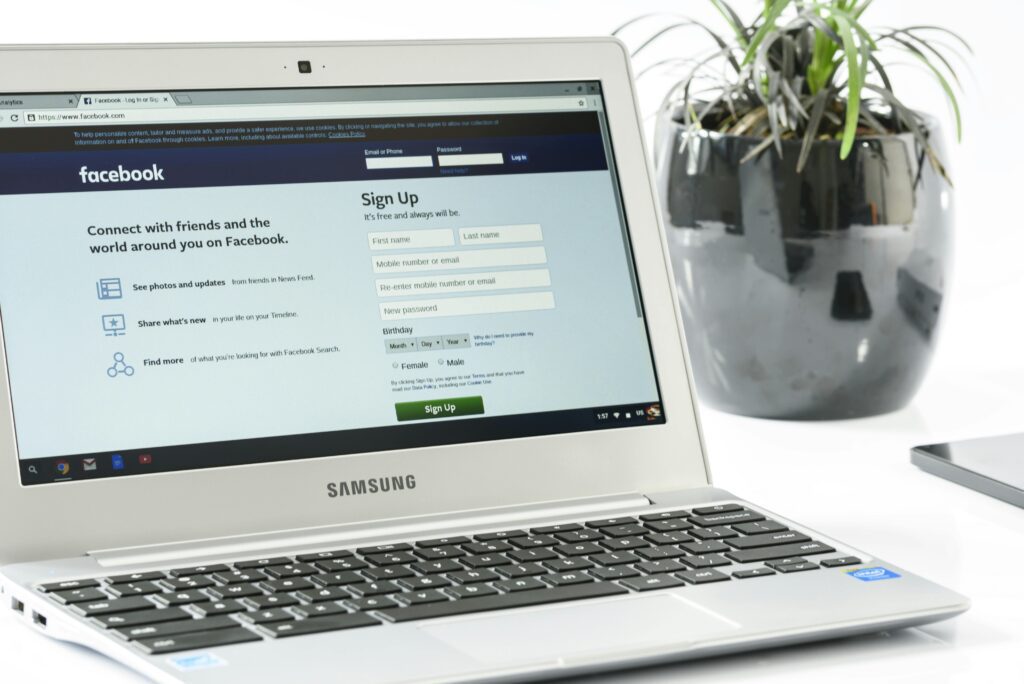Did you know that 77% of businesses using marketing automation see increased conversion rates, while price drop notifications specifically deliver an average 3% sales uplift? In today’s hyper-competitive marketplace, price-sensitive customers are slipping through your fingers every day, and manual price monitoring is costing your business both time and revenue.
Price drop notification automation isn’t just about sending alerts—it’s about creating intelligent workflows that capture leads, re-engage hesitant buyers, and turn pricing changes into profit opportunities. These automated systems work 24/7 to identify opportunities, nurture prospects, and convert interest into sales while you focus on growing your business. By implementing the right price drop notification workflows, you can transform abandoned carts into completed purchases and turn price-conscious browsers into loyal customers.
1. Abandoned Cart Price Drop Recovery Workflow
Transform your abandoned shopping carts into revenue-generating opportunities with intelligent price drop automation that targets your highest-intent customers. This workflow addresses the common challenge where customers abandon carts due to price hesitation, providing an automated solution that brings them back when prices become more favorable.
The workflow begins when a customer adds items to their cart but leaves without purchasing. Your system automatically tags these products as “interested” and monitors them for price changes. When the price drops by your predetermined threshold—whether a specific percentage or dollar amount—the automation triggers a personalized email notification to the customer.
This approach proves incredibly effective because it targets customers who’ve already shown strong purchase intent. The average Fresh Relevance client using browse abandonment workflows generates $30,000 in additional sales for every $1 million in turnover. Furthermore, these targeted notifications help eliminate financial barriers to purchase while providing your business with additional touchpoints to re-engage valuable prospects.
2. Multi-Channel Price Alert Broadcasting System
Maximize your reach and engagement by delivering price drop notifications across email, SMS, and push notification channels simultaneously. This comprehensive workflow ensures your message reaches customers through their preferred communication method, significantly increasing the likelihood of conversion.
Your automated system monitors price changes and triggers notifications across all channels when thresholds are met. Email alerts provide detailed product information and visual comparisons, SMS delivers immediate mobile alerts for time-sensitive deals, and push notifications create instant engagement for app users. The workflow includes intelligent timing to avoid overwhelming customers while maintaining consistent messaging across platforms.
Push notifications alone can deliver a 3,500% ROI, while SMS workflows provide rapid delivery for urgent pricing updates. By combining these channels, you create multiple touchpoints that accommodate different customer preferences and behaviors. Additionally, this multi-channel approach enables you to segment customers based on their preferred communication method, leading to higher engagement rates and better customer satisfaction.
3. Competitor Price-Matching Alert Workflow
Stay ahead of your competition with automated workflows that monitor competitor pricing and alert both your team and customers when advantageous opportunities arise. This workflow solves the challenge of manual competitor monitoring while creating proactive customer engagement opportunities.
The system continuously scrapes competitor websites and marketplaces to track pricing changes on matching products. When a competitor drops their price below yours, the workflow can automatically notify your pricing team for manual review or trigger customer alerts highlighting your competitive advantage. Conversely, when your prices become more competitive, it alerts interested customers about your improved value proposition.
Businesses using competitor price monitoring see average profit margin increases of 14.7% within six months. The workflow includes customizable rules for different product categories, geographical regions, and customer segments. This approach enables dynamic pricing strategies while maintaining customer trust through transparent communication about your competitive positioning.
4. Seasonal and Promotional Price Drop Orchestrator
Leverage seasonal trends and promotional periods to maximize your price drop notification impact with intelligent timing and audience segmentation. This workflow recognizes that timing is crucial for pricing communications and optimizes delivery for maximum effectiveness.
The system analyzes historical data to identify optimal timing for different product categories and customer segments. It automatically schedules price drop notifications around high-traffic shopping periods, coordinate with existing promotional campaigns, and avoids customer fatigue by spacing communications appropriately. The workflow also includes inventory level monitoring to prevent overselling during promotional periods.
According to Capital One Shopping, temporary price reductions influence 80% of consumers to consider new products. The workflow incorporates customer behavior analytics to personalize timing and messaging for different segments. Additionally, it includes automated inventory management alerts to ensure you can fulfill increased demand generated by successful price drop campaigns.
5. Dynamic Personalized Pricing Workflow

Create personalized price drop experiences that reflect individual customer preferences, browsing history, and purchase behavior. This advanced workflow transforms generic price alerts into tailored experiences that resonate with each customer’s specific interests and buying patterns.
The system analyzes customer data including browsing history, previous purchases, cart abandonment patterns, and price sensitivity indicators to create personalized thresholds for each individual. When a product matching their interests drops to their personal price threshold, the workflow triggers customized notifications with relevant cross-selling suggestions and personalized messaging.
Personalized push notifications can boost reaction rates by 400% for ecommerce businesses. The workflow includes machine learning capabilities that improve personalization over time based on customer responses and behavior patterns. This approach creates stronger customer relationships while increasing conversion rates through highly relevant, timely communications.
6. Inventory-Linked Price Optimization Workflow
Coordinate your price drop notifications with inventory levels to maximize profitability while clearing stock efficiently. This workflow addresses the challenge of balancing price reductions with inventory management to optimize both revenue and warehouse costs.
The system monitors inventory levels alongside demand patterns to trigger strategic price drops when stock reaches predetermined thresholds. It automatically calculates optimal price reduction percentages based on carrying costs, shelf life, and historical sales velocity. Customer notifications are prioritized based on their likelihood to purchase and order value potential.
Automated inventory systems reduce the risk of overselling while ensuring accurate stock levels. The workflow includes demand forecasting to predict the impact of price reductions on inventory movement. Additionally, it coordinates with procurement systems to optimize reorder timing based on promotional performance and stock clearance results.
7. Behavioral Trigger Price Drop Automation
Activate price drop notifications based on specific customer behaviors and engagement patterns rather than just price changes. This sophisticated workflow recognizes that timing and context are just as important as price when it comes to converting interested prospects.
The system tracks customer behaviors such as repeated product views, wishlist additions, comparison shopping patterns, and extended browsing sessions. When combined with favorable price changes, these behavioral signals trigger personalized notifications with messaging that reflects the customer’s specific interaction history and demonstrated preferences.
Customers receiving weekly notifications have 440% higher retention rates than those receiving no notifications. The workflow includes behavioral scoring that ranks customers by likelihood to convert, enabling prioritized communication strategies. This approach creates more relevant customer experiences while optimizing your marketing spend on high-potential prospects.
8. Real-Time API-Driven Price Monitoring Workflow
Implement enterprise-level price monitoring with real-time API integrations that connect your pricing strategy across all business systems. This workflow addresses the need for immediate response to market changes while maintaining pricing consistency across multiple channels.
Your system integrates with pricing APIs from major ecommerce platforms, competitor monitoring services, and internal business systems to create a comprehensive real-time pricing intelligence network. The workflow automatically adjusts prices based on predefined rules while triggering customer notifications when advantageous changes occur.
Real-time pricing capabilities enable businesses to respond to market changes within minutes rather than hours or days. The workflow includes automated compliance checking to ensure price changes meet MAP requirements and business rules. Additionally, it provides detailed analytics and reporting to measure the impact of pricing decisions on revenue and profitability.
9. Lead Capture Price Alert Subscription Workflow
Transform price-conscious browsers into engaged subscribers by offering price drop alerts as a value proposition for email capture. This workflow solves the challenge of growing your email list while providing genuine value to potential customers.
The system deploys exit-intent popups on product pages offering price drop alerts to visitors who haven’t provided their email addresses. Once subscribed, customers receive automated notifications when their monitored products decrease in price, creating ongoing engagement opportunities beyond the initial interaction.
Price alert subscriptions provide brands with opportunities to collect valuable leads while giving shoppers chances to save on future purchases. The workflow includes segmentation capabilities to group subscribers by product interests and price sensitivity levels. This approach creates a permission-based marketing channel that customers actually want to receive, leading to higher engagement rates and better long-term customer relationships.
10. Advanced Analytics and Reporting Automation Workflow
Measure and optimize your price drop notification performance with comprehensive analytics workflows that track everything from open rates to revenue attribution. This final workflow ensures you can continuously improve your pricing communication strategy based on data-driven insights.
The system automatically generates detailed reports on notification performance, customer engagement, conversion rates, and revenue impact across all your price drop workflows. It tracks customer lifetime value changes, identifies top-performing messaging strategies, and provides predictive analytics for future campaign optimization.
Organizations using marketing automation see a $5.44 return for every dollar spent, while automated reporting reduces manual analysis time by up to 60%. The workflow includes A/B testing capabilities for subject lines, messaging, and timing optimization. Additionally, it provides cohort analysis to understand how price drop notifications impact long-term customer behavior and purchasing patterns.
Conclusion
Implementing these Top 10 Price Drop Notification Automation Workflows will transform your pricing strategy from reactive to proactive, ensuring you never miss an opportunity to convert interested prospects into paying customers. The combination of behavioral targeting, real-time monitoring, and multi-channel communication creates a comprehensive system that works around the clock to optimize your revenue.
Start with the abandoned cart recovery and competitor monitoring workflows to see immediate results, then gradually implement the more advanced personalization and analytics systems as your automation capabilities mature. Remember that 98% of B2B marketers consider marketing automation crucial for success, and price drop notifications represent one of the highest-converting automation strategies available to your business.
The future of pricing automation lies in AI-driven personalization and predictive analytics, so choose platforms that can grow with your business needs. By implementing these workflows systematically, you’ll create a competitive advantage that drives both customer satisfaction and business profitability while your competitors continue to rely on manual, reactive pricing strategies.
How much should I budget for price drop notification automation tools?
Pricing for automation tools varies significantly based on your business size and needs. Basic solutions like PushOwl start around $26-99 per month, while enterprise platforms can cost $3,000+ monthly. However, consider that organizations see a $5.44 return for every dollar spent on marketing automation, making these investments highly profitable. Start with smaller tools and scale up as you see results—most businesses recover their investment within 2-3 months through increased conversions and reduced manual work.
What conversion rate improvements can I expect from implementing price drop workflows?
Price drop notifications consistently deliver measurable results across industries. Price drop emails yield an average 3% sales uplift, while personalized notifications can boost reaction rates by 400%. Businesses implementing comprehensive price monitoring systems see average profit margin increases of 14.7% within six months. Additionally, customers receiving weekly notifications have 440% higher retention rates, creating long-term value beyond immediate sales increases.
How quickly can I implement these workflows without overwhelming my customers?
Implementation should be gradual to avoid customer fatigue and ensure optimal performance. Start with 1-2 high-impact workflows like abandoned cart recovery and competitor monitoring, then add additional workflows monthly. Set notification frequency limits—daily or weekly summaries often perform better than real-time alerts for customer satisfaction. 53% of US online shoppers already use price alerts, indicating strong market acceptance. Most businesses see positive results within 2-3 weeks of implementing their first workflow, with full system benefits realized within 3-6 months.
read more
Boost Revenue Now: Essential Advertising KPIs Every CEO Uses
Advertising Automation KPIs Every Marketer Should Track Picture this: companies are crushing it with $5.44 back…
10 Game-Changing Facebook Ads Workflows for 2025 Growth
Picture this: 76% of businesses using Facebook ads workflows slash their campaign management time by 30%….
10 Deadly Retargeting Mistakes Business Owners Make
Did you know that retargeting campaigns can boost conversion rates by up to 150%? Yet many…
10 Invoice Automation Workflows That Skyrocket Cash Flow Now
Are you still stuck with paper invoices and typing in data by hand? Here’s a…
Revolutionary: 10 Social Media Automation Strategies Crushing Competition
Imagine this: you’re staring at your calendar, heart racing as you realize your biggest event…
10 Hidden Price drop Automation Secrets Competitors Don’t Know
Did you know that 77% of businesses using marketing automation see increased conversion rates, while…






